Ethiopia
Ethiopia is home to the continent’s first waste-to-energy facility after a launch of the Reppie project over the weekend. President Mulatu Teshome and other high level government officials were present for the event.
The facility is built on the Koshe landfill site located on the outskirts of the capital Addis Ababa. It was launched in 2013 as a municipal solid waste incarceration plant.
It is supposed to take 1,400 tons of waste daily which figure comes up to about 80% of refuse generated by Addis Ababa. It will go on to supply the capital with 30% household electricity needs whiles conforming to global standards on air emissions.
It was built by Cambridge Industries Limited (CIL), British & Island with Chinese partner contractors. It also involved Danish consultants Ramboll. It was fully funded by government with the overall cost put at 2.6 billion birr.
In 2017, the United Nations environment programme website reported that the project was to be launched in early 2018.
The Koshe dump site that metamorphosed to the historic reppie project
The Koshe dump site which had been transformed to the Reppie project served Addis Ababa for about 50 years made news headlines in March this year after a landslide at the premises killed about 114 people – residents and scavengers – according to government records.
In the wake of the incident, the government planned relocation for persons who lived on the large area said to be the size of 36 football pitches.
They moved to establish the plant with the broader objective of transforming the site and Addis Ababa’s approach to dealing with waste.
At the inauguration of Reppi Waste-to-Energy Project worth almost 3 Billion Birr. Evident is the influence of China. Hope knowledge transfer is part of such a mega deal and not a one way street.
— Samuel Getachew (GetachewSS) August 19, 2018samzapic.twitter.com/wolsdGYEAJ
About the Reppie project – U.N. Environment
The project is the result of a partnership between the Government of Ethiopia and a consortium of international companies: Cambridge Industries Limited (Singapore), China National Electric Engineering and Ramboll, a Danish engineering firm.
The consortium was established to design, construct and in some cases own waste-to-energy facilities customized for Sub-Saharan Africa. Reppie is the first of what the consortium hopes will be a series of such facilities in major cities across the region.
“The Reppie project is just one component of Ethiopia’s broader strategy to address pollution and embrace renewable energy across all sectors of the economy,” said Zerubabel Getachew, Ethiopia’s deputy permanent representative to the U.N. in Nairobi.
“We hope that Reppie will serve as a model for other countries in the region, and around the world,” he stressed.
“In waste-to-energy incineration plants, rubbish is burned in a combustion chamber. The resulting heat is used to boil water until it turns to steam, which drives a turbine generator that produces electricity,” the U.N. website explains.
The energy generation system is more popular in Europe and in cities with limited land. France leads in the area with 126 waste-to-energy plants whiles Germany and Italy follow with 99 and 40 respectively.
Here, “waste-to-energy” incineration is a quadruple win: saving land space, generating electricity, preventing the release of toxic chemicals into groundwater, and reducing the release of methane — a potent greenhouse gas generated in landfills — into the atmosphere.
Addis Ababa’s garbage headache – Addis Standard
Addis Ababa like any booming African city has its fair share of garbage headache. The Addis Standard in holistic analysis of the city highlighted that plight in an article titled: ‘Addis Abeba: a city struggling under the weight of its failures triggers fresh minefield.’
A portion on challenges relative to garbage read: “Turn to another topic. A city with one of the highest population densities in Africa (an estimated 5,165 persons per square kilometer), is imploding from the pressure of urban migration, which is manifested in housing crisis that was characterized as “70% informal” by the UN-HABITAT. Unemployment rate stands at 21.2%.
‘The breakneck speed by which the construction of high rising buildings for the rich lack viable designs to withstand the test of a rainy season.
“Addis Abeba continues to be a city that does not have a modest way to dispose its garbage, a draining cost to the basic dignity of the city’s rich, poor and vulnerable alike.”
As a city badly in need of land, the capital in June this year outdoored Africa’s first smart parking facility. The Smart Megenagna Parking is said to hold 90 cars in a space that ordinarily will hold nine cars.
The $2.2m steel facility is primarily meant to ease vehicular parking and to keep with global trends in the area of vehicle safety. It is Africa’s first such facility and is in one of the continent’s fastest growing cities. Ethiopia is an east Africa economic giant.
Photo credit: Samuel Getachew, @GetachewSS



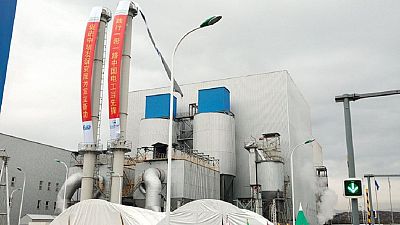

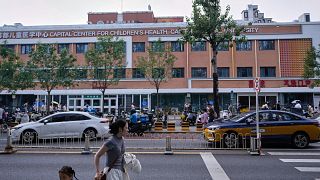
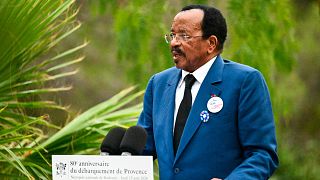

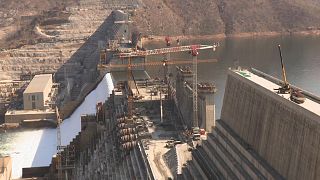
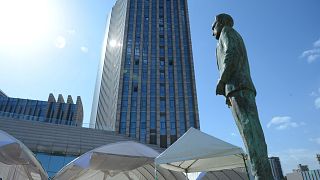
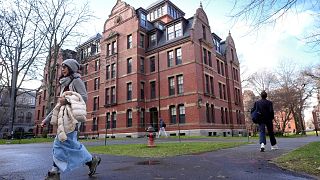


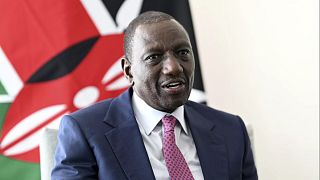
01:13
China and Ethiopia reaffirm alliance at meeting on sidelies of BRICS summit
02:38
Natural harmony of Uganda's 'Ghost Island' under threat from international tourism
02:05
In Zimbabwe, metal scrap collecting is reducing environmental pollution
Go to video
Paraguayan town celebrates vibrant Kamba Ra'anga festival with masks, fire and tradition
02:22
Cameroonian marine conservationists trained as scientific divers
01:47
Chinese city of Xuchang is world's biggest producer of wigs